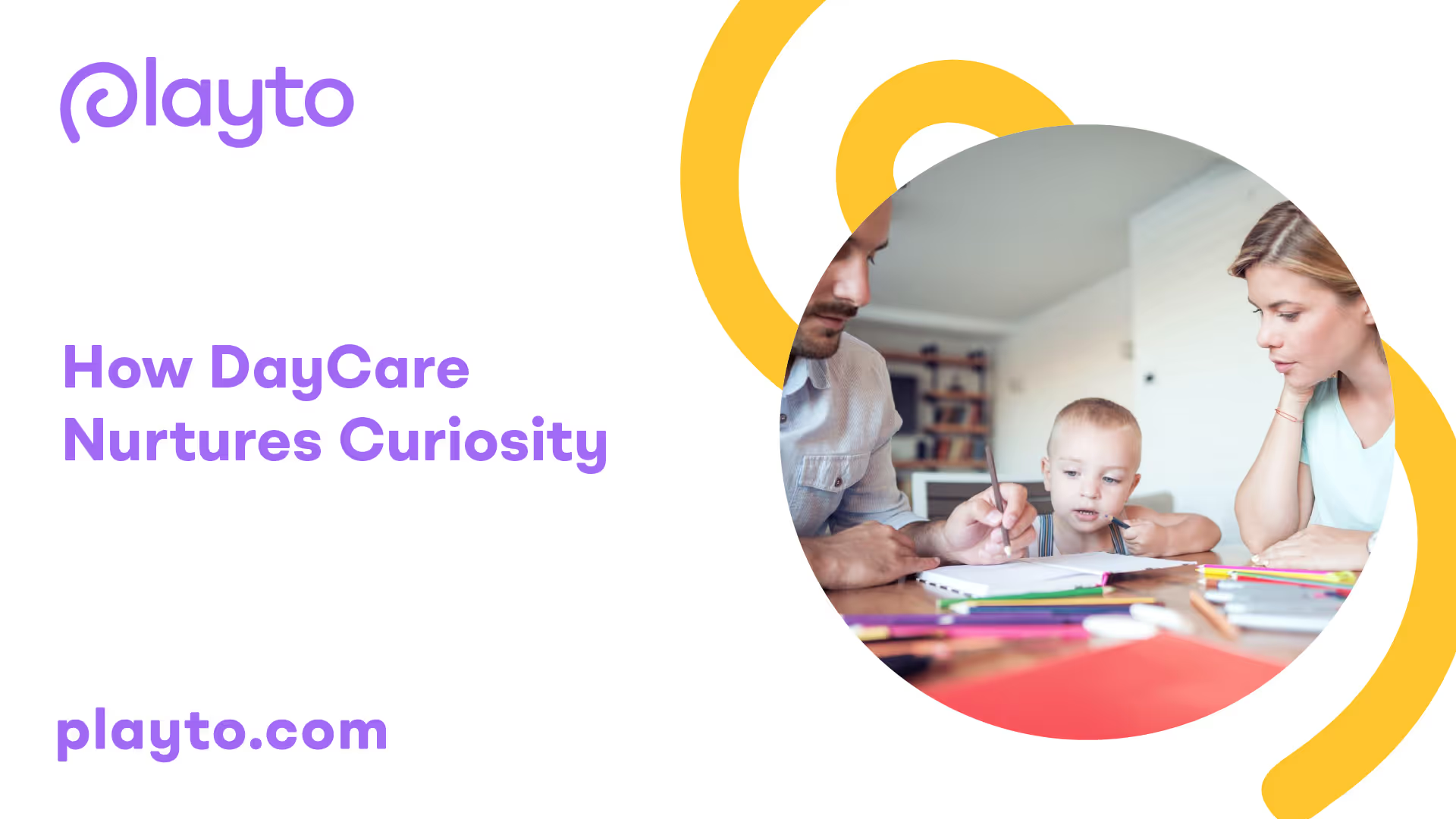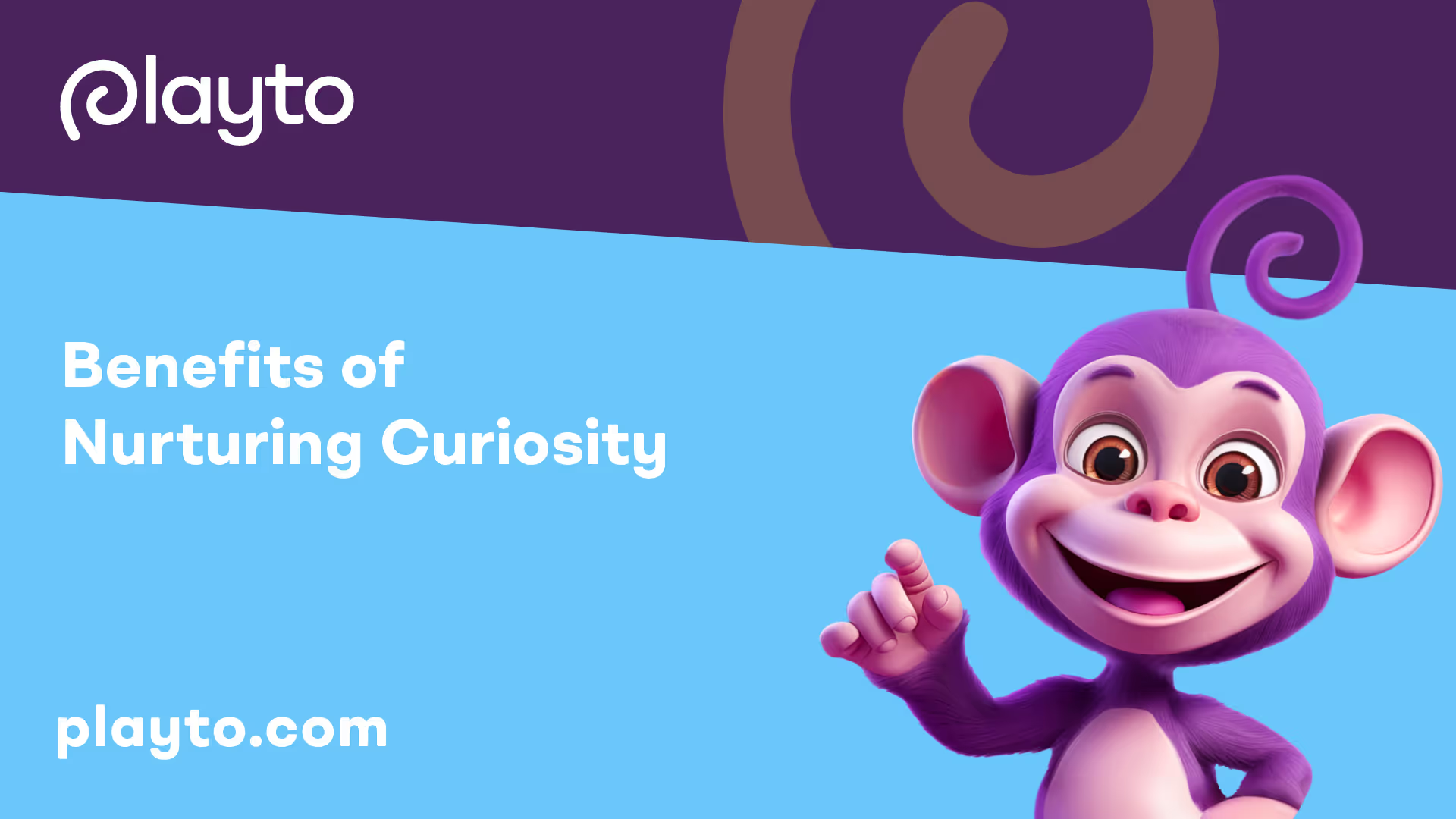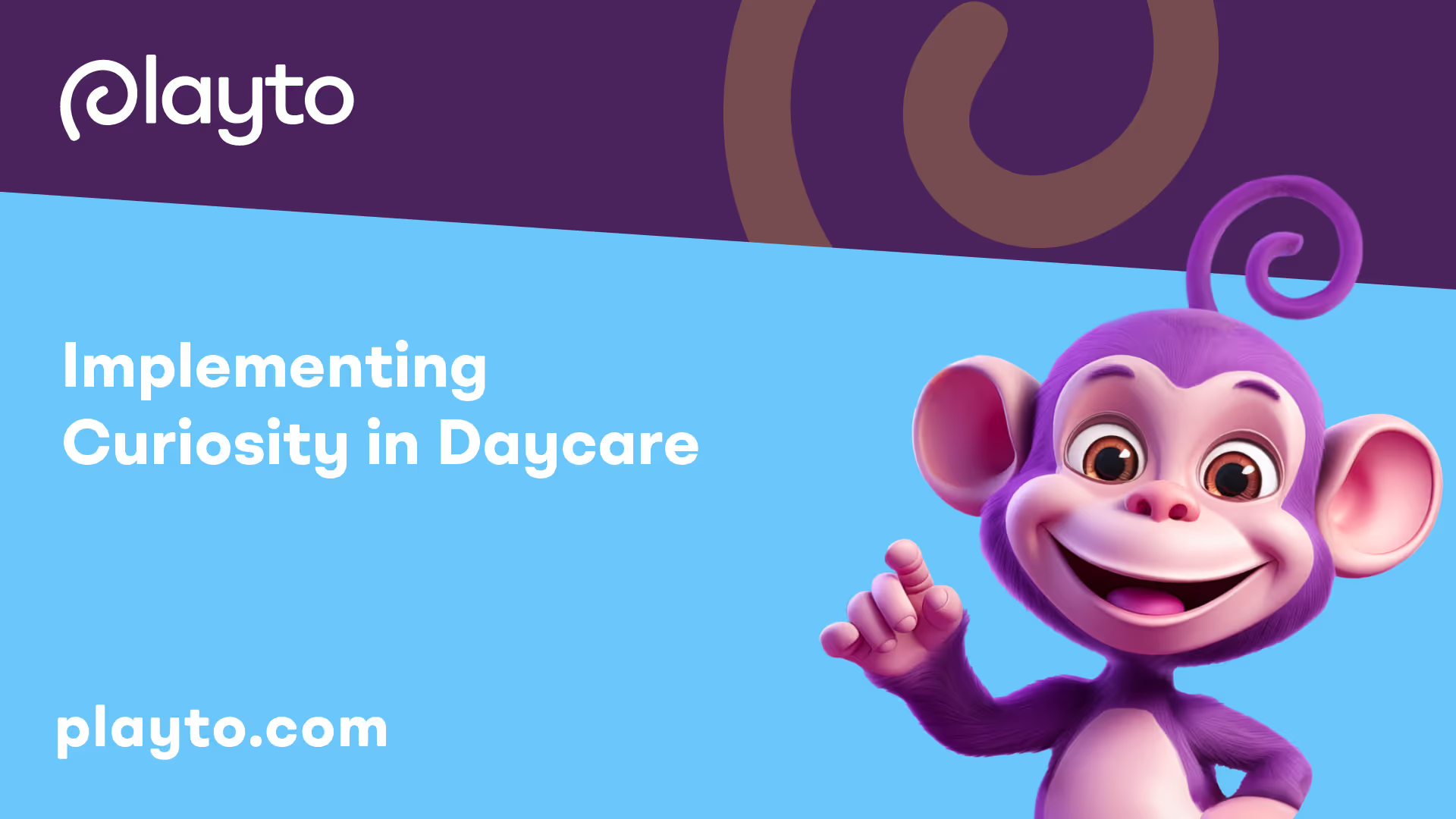
Cultivating Curiosity in Children
Importance of Curiosity in Child Development
Curiosity is a fundamental aspect of child development. It begins early, with children actively seeking to understand the world around them. By fostering curiosity, children develop their imagination and creativity, which play crucial roles in their future success Jackrabbit Care. Cultivating a sense of wonder allows children to grow, learn, and question their surroundings, equipping them with essential tools needed for adulthood.
Moreover, curiosity helps to shape various personal attributes. Studies show that curious children are generally more aware of their environment and are less likely to exhibit negative traits such as selfishness or entitlement Jackrabbit Care. They demonstrate a drive for personal growth and development, constantly aiming for new milestones.
Curiosity also inspires persistence. Children who are encouraged to explore their surroundings tend to keep trying until they find answers. This persistence contributes to resilience and equips them to handle challenges effectively Jackrabbit Care.
Benefits of Curiosity Description
Benefits of Nurturing Curiosity

Nurturing curiosity in children yields numerous advantages that extend far beyond the initial exploration phase. Children who frequently engage in curious behaviors and act upon their instincts tend to perform better academically and socially. They typically grow into intelligent, creative, and satisfied adults Jackrabbit Care.
Curiosity fosters empathy by encouraging children to consider the feelings and perspectives of others. This trait not only enhances emotional maturity but also helps cultivate meaningful relationships Balancing Elephants. Ultimately, a curiosity-driven environment sets the stage for children to thrive in school, work, and their future life.
Advantages of Nurturing Curiosity Impact on Children
- Enhanced Academic Performance: Leads to better grades and increased school engagement.
- Greater Empathy: Improves emotional connections with others.
- Lifelong Skills: Facilitates the development of critical thinking and problem-solving abilities.
By fostering curiosity, daycare environments can play a pivotal role in preparing children for a successful and fulfilling life. For more insights on how daycare contributes to child development, explore our articles on benefits of daycare for 2-3 year olds and choosing daycare for 2-3 year olds.
Implementing Curiosity in Daycare

Creating an environment that nurtures curiosity in daycare involves effective implementation of play-based learning strategies. Play has a vital role in engaging young children and fostering their natural inclination to explore the world around them.
Play-Based Learning
Play-based learning is a teaching method where children learn important concepts while engaging in playful activities. This approach takes advantage of children's inherent curiosity and their ability to explore, experiment, problem-solve, and remain engaged in tasks. Research from the National Association for the Education of Young Children (NAEYC) indicates that playful learning contexts can maximize educational experiences.
Key Features of Play-Based Learning
Feature Description
- Engaged Learning: Children learn effectively through active participation.
- Exploration: Encourages curiosity and discovery in learning.
- Teacher Guidance: Teachers support learning without dominating play.
- Social Interaction: Enhances language and social skills development.
By integrating play-based learning, daycare centers can create an enriching experience that not only entertains but also educates.
Guided Play vs Free Play
When implementing curiosity in daycare, it is essential to understand the distinctions between guided play and free play. Both approaches have their advantages, but they serve different purposes in a child's development.
- Free Play: Free play, or self-directed play, allows children to engage independently in activities of their choosing. This type of play encourages initiative, problem-solving skills, and fosters social and emotional development, as well as imagination and physical competence. The NAEYC endorses free play as a valuable practice in developmentally appropriate settings [1].
- Guided Play: In contrast, guided play involves teachers directing children's activities towards specific learning goals, while still allowing them the freedom to explore within those parameters. Research suggests that guided play is often more effective than free play in promoting skill development, such as vocabulary and spatial skills.
Comparison of Guided Play and Free Play
Aspect Free Play Guided Play
- Control:
- Child-led: Children guide their own learning experiences.
- Teacher-supported: Teachers provide guidance while allowing autonomy.
- Engagement:
- Independent exploration: Children explore and learn at their own pace.
- Focused on learning objectives: Activities are designed to achieve specific goals.
- Skill Development:
- Broad and varied: Encourages a wide range of skill development.
- Targeted towards specific skills: Activities are designed to develop particular abilities.
- Social Skills:
- Opportunities for unstructured interaction: Children interact freely with peers.
- Structured interaction with goals: Social activities are designed with specific objectives in mind.
Both guided and free play have significant roles in nurturing curiosity. The blend of these methods can be particularly effective in daycare settings, supporting children's learning and development. Daycare providers can implement a balanced approach by offering both types of play, accommodating varied learning styles while enriching children’s experiences. For insights on the impact of daycare on children's development, check out the benefits of daycare for 2-3 year olds.
The Role of Educators in Fostering Curiosity
Daycare educators play a critical role in nurturing children's innate curiosity. By creating a supportive and engaging environment, they can inspire young minds to explore and learn.
Creating a Curiosity-Focused Environment
A curiosity-focused environment emphasizes exploration and discovery. Educators can achieve this by arranging the daycare space thoughtfully. Utilizing natural materials and neutral tones instead of traditional bright decorations creates a peaceful atmosphere. This design minimizes distractions and encourages children to interact with loose items that stimulate imaginative play and sensory exploration [2].
The layout of the space should promote accessibility and creativity. By making various learning materials and play areas easily reachable, educators allow children to engage freely, prompting questions and exploration. Here are key components of a curiosity-friendly environment:
Environment Features Purpose
- Natural Materials: Encourage sensory play and exploration through the use of organic textures and elements.
- Neutral Color Palette: Create a calm learning environment by using soft, muted tones.
- Interactive Learning Centers: Facilitate child-led discovery with areas designed for hands-on, self-guided learning.
The Curiosity Approach
The Curiosity Approach emphasizes child-led learning. This philosophy allows children to make their own choices, figure things out independently, and develop skills such as confidence, critical thinking, and problem-solving. Incorporating elements from philosophies like Reggio Emilia, Montessori, Pikler, and Steiner, the Curiosity Approach respects children’s creativity and aims to inspire their natural awe and wonder.
Implementing the Curiosity Approach involves creating a learning environment that is ready and welcoming for children. Instead of merely preparing children for school, this approach focuses on ensuring that the educational setting fosters exploration and joy. Educators can facilitate this by using materials that encourage open-ended play and activities that spark curiosity. This method not only enhances learning but also maintains engagement through various activities tailored to children's interests.
In addition to physical space, educators should actively engage with children, guiding them in exploring and asking questions. This interaction reinforces the concept of curiosity as a lifelong learning tool. For more insights into daycare practices, check our articles on the benefits of daycare for 2-3 year olds and choosing daycare for 2-3 year olds.
Nature's Influence on Curiosity
Engaging with nature significantly impacts children's curiosity and overall development. Activities that connect children with the natural world can inspire exploration, creativity, and a sense of wonder.
Connecting Children with Nature
Exposure to nature fosters hands-on experiences, as children interact with their environment through activities such as jumping in puddles, climbing on rocks, or picking up leaves. These explorations not only spark curiosity but also engage children deeply with what they encounter, be it a simple walk or a day spent hiking in the woods. According to Penn State Extension, this connection encourages attention and engagement, allowing children to absorb and formulate their ideas about the world around them.
Children's consistent contact with the outdoors not only stimulates curiosity but also helps promote physical health. Activities like climbing, running freely, or digging in the dirt can combat childhood obesity while inspiring physical challenges.
Nature-Based Learning Activities
Integrating nature-based learning activities in daycare settings allows children to develop a sense of calm and appreciation for the environment. Nature encourages observation, as children notice the intricate details of a spider web or listen to the rustling of leaves in the wind. This awareness nurtures their observational skills and patience, as they learn to appreciate the small wonders of life.
Activities that involve caring for nature can foster empathy and teamwork. Tasks such as watering plants or gently handling animals help instill respect for living things and promote a sense of environmental stewardship. These experiences also provide opportunities for collaboration among children, fostering social skills essential for their growth. For further reading on social skills at daycare, see our detailed analysis.
Nature-Based Activity Benefits
- Climbing Trees: Promotes physical strength and coordination, helping children develop motor skills.
- Searching for Insects: Enhances observation and curiosity, fostering an interest in nature and science.
- Planting Flowers: Teaches responsibility and empathy by caring for living things.
- Going for Nature Walks: Encourages exploration and appreciation for the outdoors, connecting children with the environment.
These activities align perfectly with the broader mission of daycare programs: to harness children's natural curiosity and support their growth through enriching experiences. To discover more about the advantages of daycare for young children, check our article on benefits of daycare for 2-3 year olds.
Encouraging Positive Behavior in Daycare
Creating a nurturing environment in daycare involves encouraging positive behavior among children. This section discusses effective behavior management strategies and highlights the importance of collaboration with parents to foster a healthy learning atmosphere.
Behavior Management Strategies
Effective behavior management is crucial in establishing a productive learning environment in daycare settings. When children exhibit good behavior, disruptions are minimized, leading to smoother daily activities. Positive behavior outcomes are essential for children's success in kindergarten and throughout life, as noted by Procare Software.
Implementing structured environments, complete with routines and schedules, plays a significant role in promoting security, confidence, and happiness among children. These routines guide children through daily activities and transitions, thereby reducing anxiety and distractions that could lead to disruptive behavior.
The following strategies can be effectively utilized to manage child behavior:
Strategy Description
- Praise and Positive Attention: Offering specific praise helps children recognize the value of good conduct, reinforcing positive behavior and encouraging them to excel within the daycare setting.
- Reward Charts: Implementing a reward chart visually demonstrates the connection between actions and rewards, motivating children to engage in positive behavior consistently.
- Clear Expectations: Clearly communicating behavioral expectations allows children to understand boundaries and appropriate conduct.
- Consistent Consequences: Ensuring that children experience consistent consequences for both positive and negative behaviors helps in reinforcing rules.
Collaborating with Parents
Collaboration with parents is essential for maintaining consistency in behavioral expectations between the daycare and home environments. By fostering a partnership between caregivers and parents, both parties can work together effectively to guide children towards positive behavior [3].
Regular communication about children's progress and behavior at daycare enhances trust and understanding. When parents' expectations align with the daycare’s approach, children are better equipped to navigate their social interactions and learning experiences.
Daycare providers can hold meetings or workshops to equip parents with strategies to reinforce positive behavior at home. Sharing resources and discussing challenges cultivates a supportive community for both children and parents.
In summary, utilizing structured behavior management strategies and collaborating with parents can significantly nurture positive behaviors in daycare settings, ultimately allowing children to explore their curiosity in a safe and supportive environment. For more information on the benefits of daycare for 2-3 year olds and choosing daycare for 2-3 year olds, explore the links.
Maintaining Curiosity in Early Childhood
Fostering and maintaining curiosity in early childhood is vital for children's development. It not only supports their intellectual growth but also plays a significant role in building resilience and promoting lifelong learning.
Promoting Resilience Through Curiosity
Curiosity empowers children to face challenges with confidence. When children are encouraged to ask questions and seek answers, they develop persistence. This persistence helps them to keep trying, even when faced with obstacles, ultimately leading to the creation of a resilient mindset. As stated by Jackrabbit Care, curiosity in children inspires persistence, which is crucial for navigating life's challenges.
Also, by exploring their environment and discovering the "why" and "how" of various phenomena, children learn to approach problems from multiple angles. This problem-solving ability not only enhances their resilience but also equips them with the skills necessary for future academic and social success [4].
Benefits of Curiosity Impact on Resilience
- Encourages Problem-Solving: Develops strategies to tackle challenges, helping children think critically and independently.
- Fosters Persistence: Inspires children to keep trying, even when faced with difficulties, building resilience.
- Promotes Emotional Maturity: Enhances understanding of interpersonal dynamics, leading to better emotional regulation and empathy.
Sustaining Curiosity for Lifelong Learning
Sustaining curiosity is vital for fostering a love of learning that lasts a lifetime. Children who regularly engage their curiosity tend to perform better in various life aspects, becoming intelligent, creative, and satisfied individuals [5].
In daycare settings, encouraging exploration and discovery is essential. Children who experience active curiosity are more likely to become self-sufficient problem-solvers who can entertain themselves and think creatively. In a structured learning environment, these skills are crucial for success.
Educators can play a pivotal role in maintaining curiosity by providing diverse and stimulating learning experiences. Activities that encourage inquiry, such as hands-on projects or nature exploration, help to keep curiosity alive and thrive. Such experiences not only foster creativity but also prepare children for adapting to various learning environments, including their future schooling [6].
By embracing curiosity, daycare programs contribute significantly to children's emotional and intellectual growth, laying the foundation for a lifelong passion for learning and discovery. For more insights on how curiosity develops social skills, visit our article on social skills at daycare.
References
- [1]: https://www.naeyc.org/resources/pubs/yc/summer/power-playful-learning
- [2]: https://learningjournals.co.uk/what-is-the-curiosity-approach-and-why-is-it-important/
- [3]: https://www.procaresoftware.com/blog/10-early-childhood-behavior-management-strategies/
- [4]: https://balancingelephants.com/4-essential-benefits-of-curiosity-in-children/
- [5]: https://www.jackrabbitcare.com/blog/curiosity-may-important-skill-child-learn/
.avif)